
 Flash News
Flash News
HIV on the rise in Kosovo, 10 new cases recorded in five months
AMP checks at Kapshtica customs, drug found hidden in a vehicle
Insult and denigration, the Journalists Association of Albania condemns Ristan's attack on the "Piranha" journalist
"Land Rover" abandoned for two years in the Port of Durres, 3 firearms and cartridges found, 24-year-old wanted
Mavraj's message to the Rossoneri: Kosovo is ours forever. Now play football
Tourism without heritage: Durrës opens the season with museums closed

The large-sized table at the entrance to the Archaeological Museum of Durrës has remained the same as it was three years ago, when its restoration works began with 348 million lek funding from the European Union's EU4Culture program.
Only the estimated completion date for the reconstruction has changed three times. Initially, the deadline for completion of the works was in November 2023. It was later postponed to February 2024 and April 2025, and has now been postponed again to the end of July.
But this is not the only museum that will keep its doors closed to tourists during this year's summer season.
Several years of delays in the restoration of Durrës museums have kept the cultural heritage sites in the ancient city away from the prying eyes of the public.
The Archaeological Museum, first inaugurated in 2003, is being restored for the second time in the last 15 years, and delays in the works are repeated.
“Although the interest of foreign tourists has been growing, we find ourselves in difficulty when informing them that the country’s largest Archaeological Museum is closed,” Bjordi Xhafa, a tourist guide from the coastal city, told BIRN.
"The cultural tour time in Durrës now does not exceed two hours, much less, as in addition to the Archaeological Museum, the Ethnographic Museum also continues to undergo reconstruction," Bjordi added.
According to the new guide, the Roman Baths also cannot be visited due to restoration works at the "Aleksandër Moisiu" Theater.
The 2nd century AD monument and the city's modern theater have coexisted since 1965, when the Baths were discovered by archaeologists in the foundations of the theater building.
Tourist groups interested in the cultural heritage of our country continue their journey to two other countries in the Western Balkans - Montenegro and North Macedonia.
However, the number of visitors to ancient Durrës has increased year by year.
“Since the beginning of this year, the Ancient Amphitheater and the Venetian Tower have been visited by a total of 13,500 local and foreign tourists,” the director of the Museum Center, Alban Ramohito, told BIRN.
"In both facilities that are visited for a ticket, in these five months there are about 2,300 more visitors than in the same period last year," he added.
According to the same source, the restoration of the Archaeological Museum will be completed when the antiquity pavilion on the first floor of the building is recreated, and the Middle Ages pavilion, very little known in the history of the coastal city, is created for the first time.
The upper floor of the building will serve for didactic meetings, while the courtyard will be turned into a small archaeological park, all as foreseen in the restoration contract.
"All of this will take time," said Director Ramohito.
Durrës is also expected to see the return of the "Cultural Monument" building, known as the Ethnographic Museum and the "House of Alexander Moses".
“We are satisfied with the quality of the restoration works, which have reached the stage of installing the lighting fixtures,” Alketa Tragaj, director of the “Aleksandër Moisiu” Cultural Center, told BIRN.
"We are preparing the return of the fund of works of art, ethnographic objects and stands dedicated to Moses," Tragaj added, recalling that when the November 2019 earthquake severely damaged the building, everything was sheltered in the theater's premises.
However, the future of the apartment, which has been returned to its rightful owners, has not yet been decided.
Cultural leaders in Durrës are seeking an optimal solution for the 19th-century building located next to the medieval fortification walls.
The lack of the city's two largest museums is expected to be somewhat filled by the exhibitions opened in recent years by several specialists passionate about the city's new history.
Brunilda Liçaj, a lecturer at the "Aleksandër Moisiu" University, told BIRN that despite lacking financial support, the "Eavesdropped Tourists" exhibition, which has been operating in the city center since last year, has aroused a lot of interest among foreign tourist groups.
The materials and interviews have been compiled into a documentary, which could give another boost to visits to the exhibition with objects of visits to Albania by tourists who were wiretapped by the State Security.
Likewise, the private MuzehLab exhibition, which opened a few years ago, is a great idea. Although these exhibitions are commendable, tour operators emphasize that they cannot replace museums.
"But the repeated absence of the two most important museums for the history of the ancient city cannot be easily replaced," said Bjordi Xhafa. Reporter.al
Latest news



Trump warns of 'consequences' if Musk funds political rivals
2025-06-07 21:29:11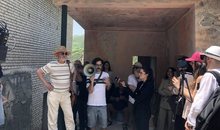


14-year-old falls from 6th floor of apartment in Tirana
2025-06-07 20:28:07
"Old enemies don't make new friends"
2025-06-07 19:52:58




HIV on the rise in Kosovo, 10 new cases recorded in five months
2025-06-07 17:47:59
Fire in the waste field in Vlora, Berisha: Monstrous crime against citizens
2025-06-07 17:27:40

PL: The country's food safety system does not track food contamination
2025-06-07 16:40:37
Fire engulfs Vlora waste field again, mayor: Intentional
2025-06-07 16:20:06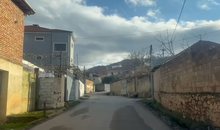
20-year-old man ends his life in Pogradec, police reveal details
2025-06-07 15:47:29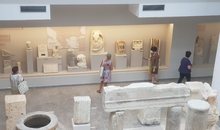
Tourism without heritage: Durrës opens the season with museums closed
2025-06-07 15:27:30

Gjendet një person i pajetë në Tiranë
2025-06-07 14:54:23
Detailed control, the rules that fans must follow in the Albania-Serbia match
2025-06-07 14:32:19
A heat wave will sweep across Albania next week
2025-06-07 14:10:18





AMP checks at Kapshtica customs, drug found hidden in a vehicle
2025-06-07 12:15:26
Kosovo Assembly fails to be constituted even after 28 attempts
2025-06-07 11:58:58


Oh Albania, you have no old age!
2025-06-07 11:05:01


Mavraj's message to the Rossoneri: Kosovo is ours forever. Now play football
2025-06-07 10:10:52


Why are Ukrainians being accused of arson at Keir Starmer's properties?
2025-06-07 09:16:24
Foreign exchange, how much foreign currencies are sold and bought today
2025-06-07 09:04:55

Horoscope, what do the stars have in store for you today?
2025-06-07 08:31:29
Weather forecast for Saturday, here's what the temperatures will be like
2025-06-07 08:17:35
Posta e mëngjesit/ Me 2 rreshta: Çfarë pati rëndësi dje në Shqipëri
2025-06-07 08:01:23
Heavy metals in the Drin River, causes of cancerous diseases
2025-06-06 22:54:02


Works in Spaç, Lubonja: Destruction of collective and historical memory
2025-06-06 21:54:32

DASH: Balkans, part of American strategy for expelling migrants
2025-06-06 21:12:33

Ilir Shqina, a diplomat, and her business partner Grida Dumas were suddenly born
2025-06-06 20:21:46


Couple injured in Kavaja, police find firearm hidden in wall
2025-06-06 19:05:19

EULEX mandate in Kosovo extended until 2027
2025-06-06 17:58:20
These are the 3 zodiac signs that will be favored in the next decade
2025-06-06 17:50:52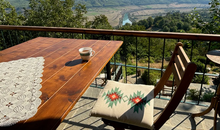


Anthropology
2025-06-06 17:06:00
EU supports International Criminal Court after US sanctions
2025-06-06 16:47:51
Gonxhe ignores concerns about Spaçi and defends the continuation of the works
2025-06-06 16:31:42
Providing online services, report: Institutions, delays in update requests
2025-06-06 16:24:10
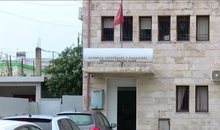
The head of the Vlora Cadastre is changed again
2025-06-06 15:58:49
With a rounded belly, Dafina Zeqiri enjoys the holidays with her partner
2025-06-06 15:36:06

Foods that should not be missing from the Eid al-Adha table
2025-06-06 15:04:48
They exploited girls for prostitution in Vlora, 28-year-old arrested
2025-06-06 14:44:26
Israel warns of more attacks in Lebanon
2025-06-06 14:26:30
The race for the head of the BKH, the deadline for applications ends today
2025-06-06 14:15:18
14-year-old girl in Vlora rescued after risking drowning at sea
2025-06-06 14:04:23
Challenge with Albania, Serbian team arrives in Tirana
2025-06-06 13:49:04
He injured the married couple in Rrogozhina, here is who the perpetrator is
2025-06-06 13:34:20

Berisha wishes Eid al-Adha: Blessings to your families and our nation
2025-06-06 13:09:28
He injured his neighbors with a gun, the perpetrator surrendered to the police
2025-06-06 13:02:47

Tom Cruise enters Guinness World Records
2025-06-06 12:38:48
From orange peels to bananas, discover the foods that help you with stress
2025-06-06 12:28:53


How did the feud between Donald Trump and Elon Musk start?
2025-06-06 11:52:32
The prosecution sends 5 Kosovar citizens to trial for drug smuggling
2025-06-06 11:33:56
21-year-old injured with knife in Saranda
2025-06-06 11:24:10
Kosovo citizens flock to the Albanian coast, long queue from Morina
2025-06-06 11:11:07
Gunfire in Kavaja, shot at a married couple
2025-06-06 11:05:01
Merz: Bashkëpunim i ngushtë Gjermani-SHBA
2025-06-06 10:45:35
A marijuana plantation is found in Cakran, a 24-year-old man is arrested
2025-06-06 10:25:53
Gianni De Biasi shows the formula for how we can win against Serbia
2025-06-06 10:08:57
Hoxha: The CEC was one of the main architects of the destruction of free voting
2025-06-06 09:52:16
Foreign exchange, June 6, 2025
2025-06-06 09:33:01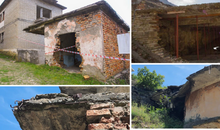


Accident on the new Kukes bridge, three vehicles collide
2025-06-06 08:43:06
Horoscope, what do the stars have in store for you today?
2025-06-06 08:28:14
Clear weather with few clouds, the forecast for this Friday
2025-06-06 08:13:54

Morning Post/ In 2 lines: What mattered yesterday in Albania
2025-06-06 07:46:29
